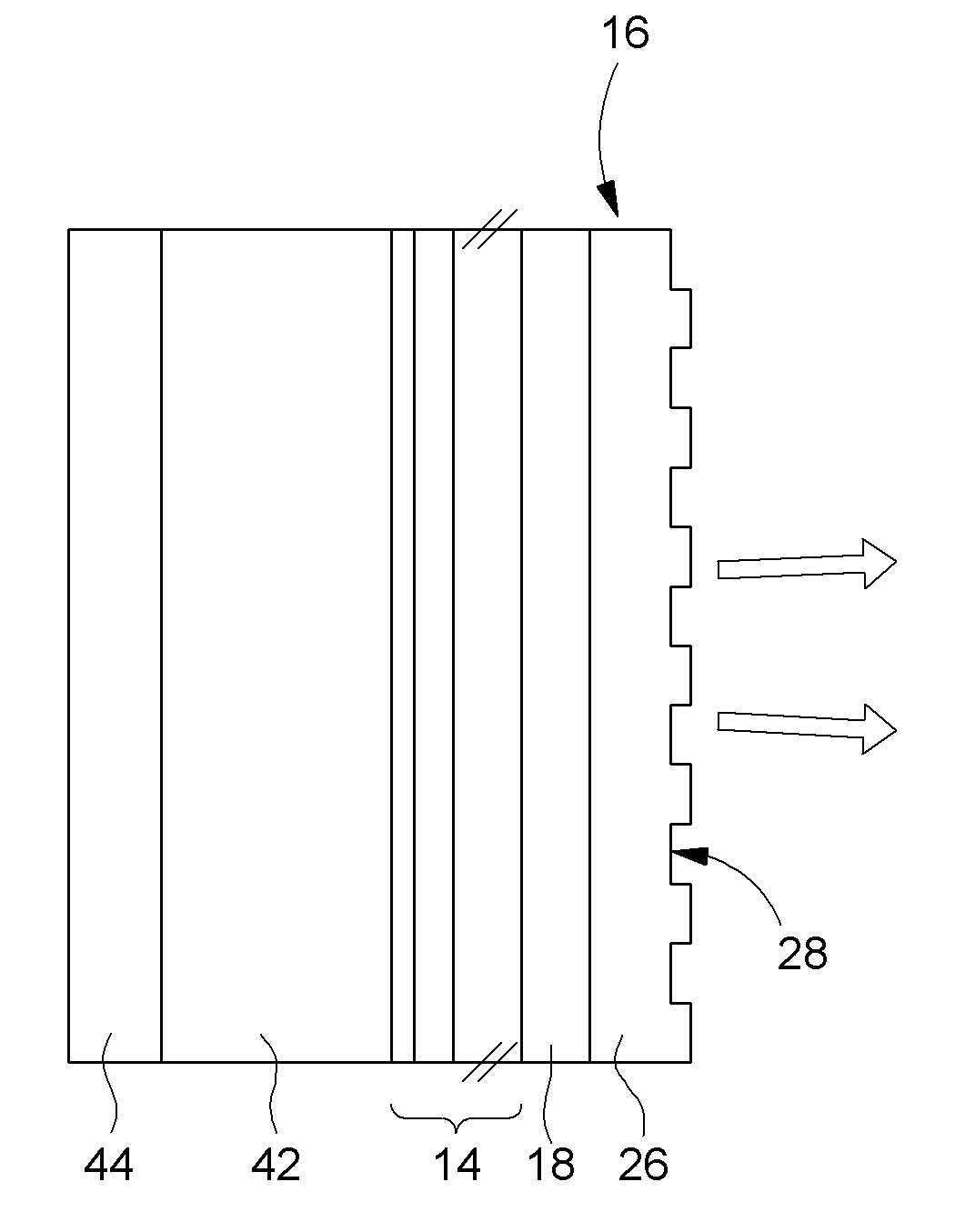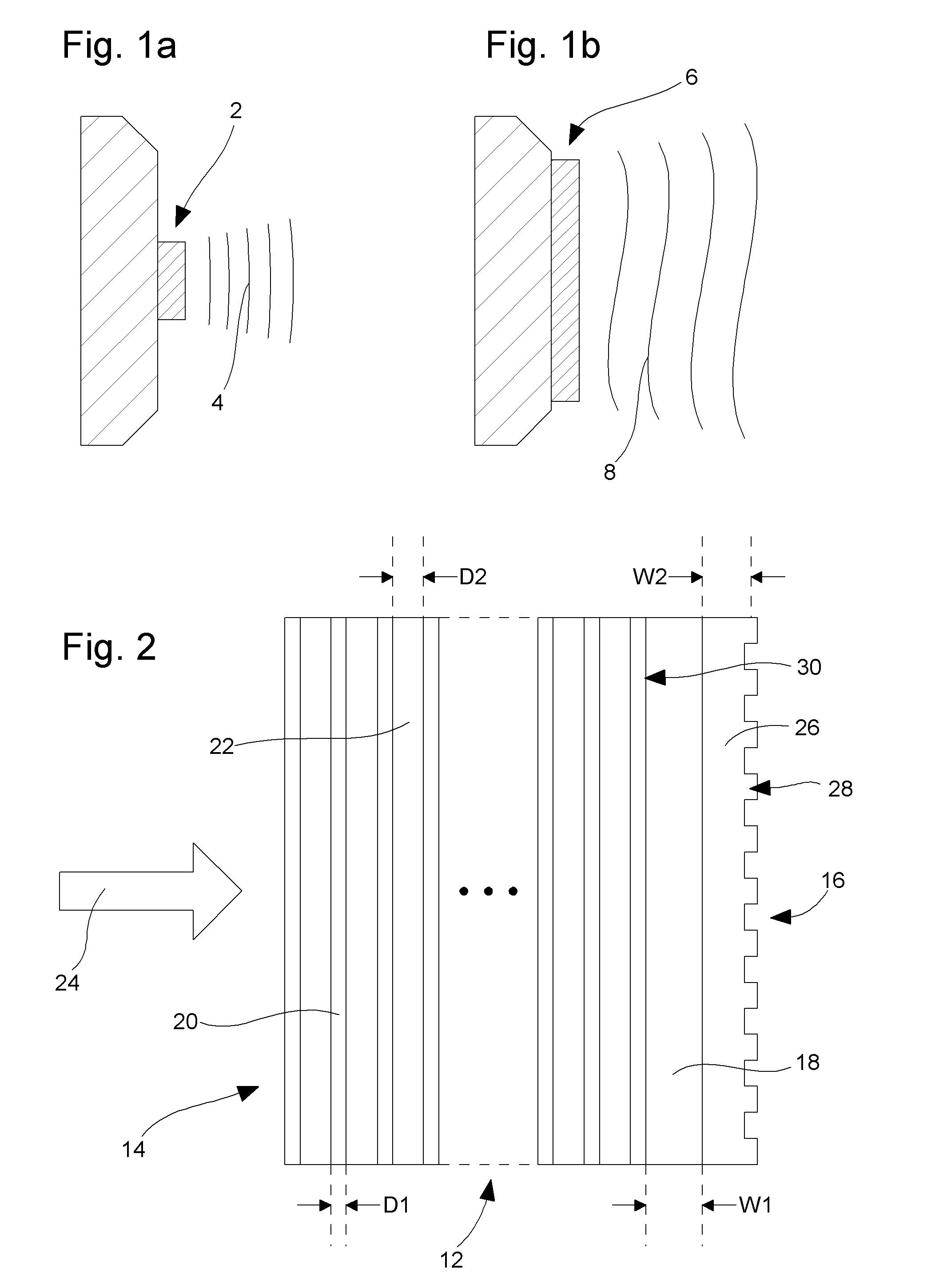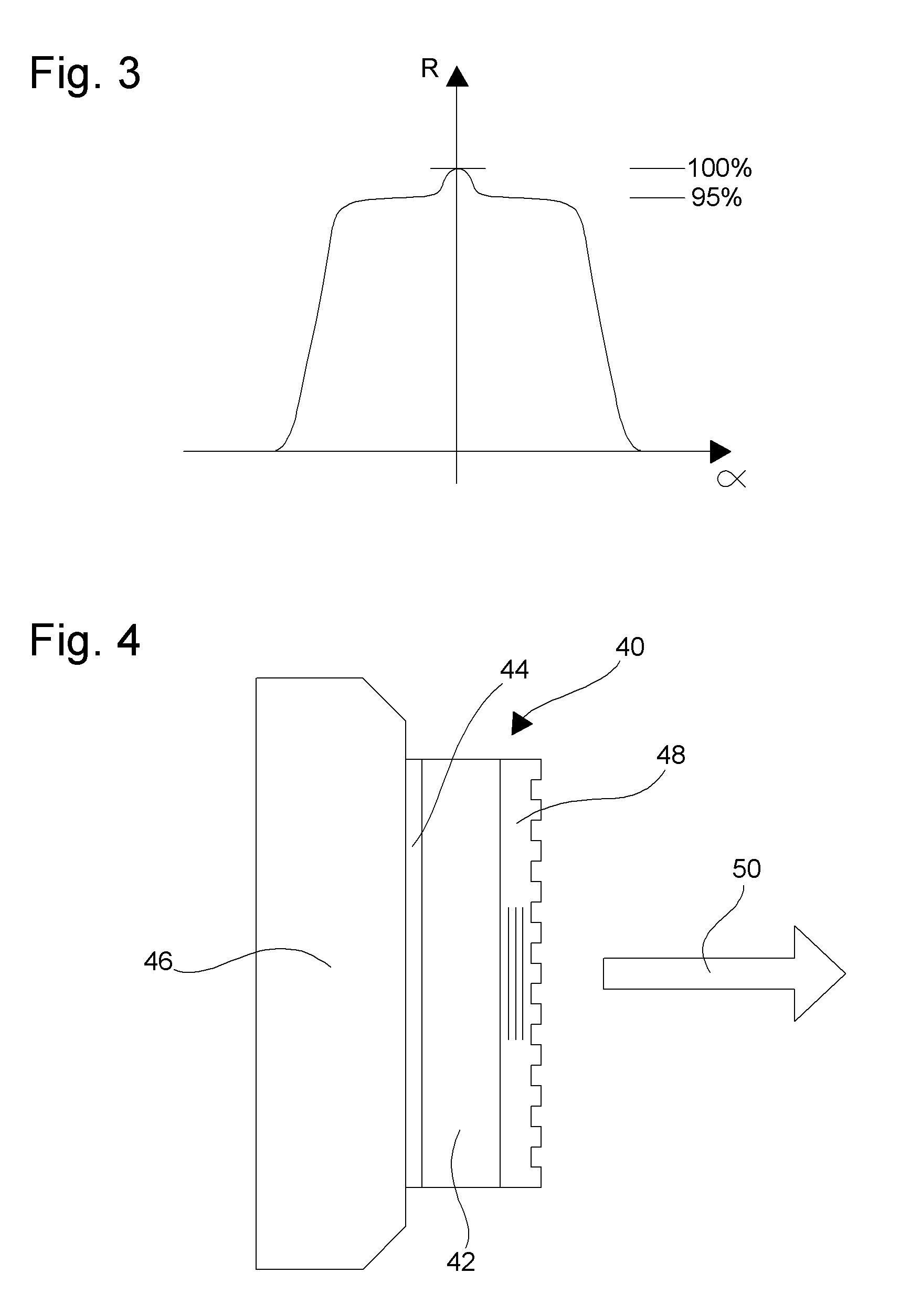Mirror Structure and Laser Device Comprising Such a Mirror Structure
a mirror structure and laser device technology, applied in the direction of lasers, optical resonator shape and construction, instruments, etc., can solve the problems of incompatible low-cost batch manufacturing technology, inability to solve the problem of spatial coherence of emitted beams, and increasing the emission area, so as to achieve efficient solution
- Summary
- Abstract
- Description
- Claims
- Application Information
AI Technical Summary
Benefits of technology
Problems solved by technology
Method used
Image
Examples
first embodiment
[0037]For differentiating the reflection coefficient of the plane waves of beam 24 having close to normal angular spectral components from those plane waves having oblique angular spectral components, on the one hand, the inherently wide angular spectrum multilayer reflective mirror 14 is arranged for reflecting a major part but not substantially all of the power of the incident beam 24, preferably in the range 80% to 98% and in particular in the range 90% to 97%. On the other hand, the resonant grating mirror 16 is arranged for providing quasi total resonant reflection of the power transmitted by the multilayer mirror for a narrow angular spectrum around the normal as disclosed in document by I. A. Avrutsky and V. A. Sychugov: “Reflection of a beam of finite size from a corrugated waveguide”, Journal of Modern Optics, Vol. 36, 1989, p. 1527. By so doing, the advantages of both mirrors are combined: usual multilayer mirrors can exhibit close to 100% reflectivity but they are only we...
second embodiment
[0055]In a laser cavity of the second embodiment shown in FIG. 7 the waveguide grating mirror 16 is used as a front mirror to provide an unstable resonator of relatively low quality factor. Multilayer 14 is an antireflection multilayer. Buffer layer 18 must simply be large enough to isolate the coupled waveguide mode in layer 26 from multilayer 14 and especially from the active zone which can have a refractive index larger than the waveguide mode effective index. Other references already described will not be described again.
[0056]In case where the mirror structure of the invention is placed in the near field of the emitted wave, at a distance which is much smaller than the Fresnel distance and the active medium has a positive or negative thermal lensing effect, as it can be the case in microchip lasers, the incident wave has significantly larger angular width than the angular width of the waveguide mode achieving resonant reflection and said wave therefore partially transmits throu...
PUM
 Login to View More
Login to View More Abstract
Description
Claims
Application Information
 Login to View More
Login to View More - R&D
- Intellectual Property
- Life Sciences
- Materials
- Tech Scout
- Unparalleled Data Quality
- Higher Quality Content
- 60% Fewer Hallucinations
Browse by: Latest US Patents, China's latest patents, Technical Efficacy Thesaurus, Application Domain, Technology Topic, Popular Technical Reports.
© 2025 PatSnap. All rights reserved.Legal|Privacy policy|Modern Slavery Act Transparency Statement|Sitemap|About US| Contact US: help@patsnap.com



